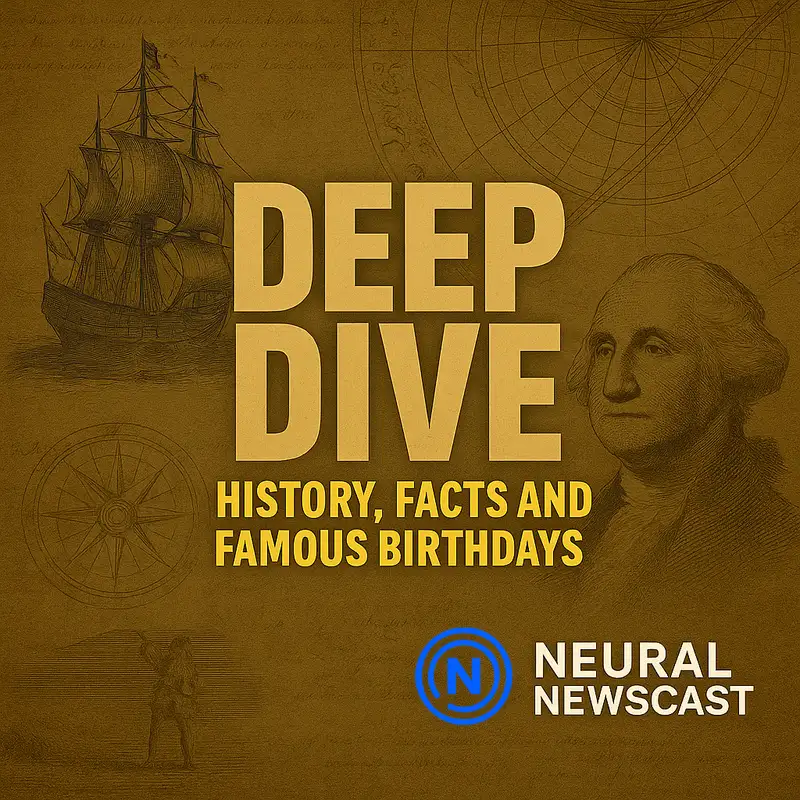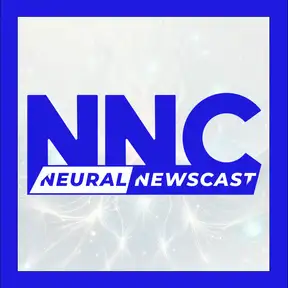Deep Dive: From NASA’s Quiet Build to Matthau’s Craft — Left-Handed Typing Curiosities - October 1, 2025
From AI-generated insights to human-reviewed accuracy, this is Neural Newscast, keeping
you informed every day.
Thanks for joining us for this Neural Newscast deep dive.
I'm Benjamin, your innovation correspondent, and alongside Cassandra, your politics reporter,
we're about to uncover some intriguing stories.
On this day in 1958, years of testing and development by the United States,
space community culminated as NASA officially opened its doors,
marking a pivotal moment in the nation's emerging space program.
That line alone carries so much.
Testing and development is the grind before an agency becomes a symbol.
It's where policy, funding and technical work actually meet.
Exactly. When I hear continued testing and development, I picture iterative engineering,
prototypes, wind tunnel data, guidance systems getting tweaked, teams learning fast from
each trial. It frames NASA's birth as a practical grounded handoff from NACA into a new mission.
And from the policy side, that phrasing underscores deliberate commitment.
Those precursor teams weren't static.
They were building capabilities that made formal oversight and a bigger budget, both logical and necessary.
There's narrative tension too.
Instead of one dramatic launch, you get a chain of choices and experiments that add up to a threshold moment.
That makes the establishment feel earned.
Earned and politically meaningful.
The sustained work created proof for lawmakers and the public that a national space effort needed its own institution.
This step Congress took with the National Aeronautics and Space Act.
It also humanizes the story, engineers chasing small wins, learning from failures, stitching together tracking stations and test ranges, all feeding a larger transformation.
And calling it a pivotal moment is fair.
It marked a shift in national priorities toward coordinated, long-term investment and space capabilities, not just headline-grabbing launches.
For innovation-minded listeners, it's a case study in how technical progress and organizational design are inseparable.
Without sustained testing, you don't get the mandate or the momentum to stand up an agency like NASA.
Politically, it's about timing and momentum.
Operational success sets the stage for legislation, committee buy-in, and budgets that lock in direction for decades.
That blend of hands-on engineering and institutional push is what made 1958 so consequential on the path to NASA.
Precisely, a turning point born of persistent, practical effort that set the United States space program on a new trajectory.
Stay with us more deep dive exploring coming up.
Today we celebrate the birthdays of Walter Mathau, 1920, Jimmy Carter, 1924, and Julie Andrews, 1935,
a comedy legend, a former U.S. president, and a musical icon.
Let's zero in on Walter Mathau, your pick, Benjamin, and a fascinating choice given that trio.
Absolutely.
Mathau's career arcs from gritty character roles to comic leads, and that gruff charm is deceptively
sophisticated.
It's not a schtick.
It's a finely tuned instrument.
He's often remembered for the odd couple and grumpy old men, sure, but there's nuance
beneath the humor.
His stillness, timing, and the way he grounded scenes added real emotional weight to broad comedy.
Right, and he could drop a one-liner so dry it hit like a gut punch, then pivot to a small,
human beat that reframed the scene.
The Academy noticed Best Supporting Actor for the Fortune Cookie because it was craftsmanship.
That win is a marker, but what stands out is how his persona reshaped ensembles.
Directors and co-stars calibrated to his rhythm, which is why partnerships, especially with
Jack Lemon, felt so effortless.
The Mathau Lemon Chemistry is a case study and collaborative innovation, two distinct energies creating something greater than the sum of their parts, and audiences trusted that authenticity.
There's also a cultural thread. His characters often embodied a kind of weary wisdom, a seasoned everyman, which you also see in political storytelling when a grounded voice shifts public sympathy.
I hadn't connected that, but you're right.
That believable, world-weary register becomes a touchstone in culture and policy narratives,
and Mathau helped popularize it.
Small legacy details matter, the way his choices influenced actors who blend sarcasm with tenderness,
and how filmmakers kept casting that presence to anchor otherwise eccentric stories.
From a storytelling perspective, he shows how technical mastery, timing, breath, micro-expressions turns into lasting cultural currency.
Those are lessons for any creator, startup storyteller included.
It's easy to forget how performers like Mathau shaped our emotional vocabulary for humor and resilience, especially in films that mix laughter with real stakes.
Before we move on, what sticks with me is how his work keeps resurfacing for new audiences, streaming, clips, revivals.
The roles feel contemporary because the emotional mechanics are timeless.
That timelessness is the hallmark of a legacy worth studying.
Craft that still informs how we write, direct, and interpret character in entertainment and public narratives.
So when we mark Walter Matthews' birthday, we're celebrating not just a filmography,
but a model of performance that continues to shape storytelling across mediums.
Exactly. And his influence lingers in the cadence of modern character work,
and in the subtle ways we teach audiences to read a wise, rye presence on screen.
We'll be right back after this short break.
Thanks for listening to NNC Neural Newscast.
This is Chad Thompson, the founder of Neural Newscast.
If you want to go deeper, we've got more stories and context waiting for you at our website,
neuralnewscast.com.
And we're back with more from Neural Newscast Deep Dive.
The average person's left hand does 56% of the typing.
That number really stands out.
56% for the left hand is a clear majority,
and it immediately makes me think about what patterns or layouts produce that imbalance.
Right, think about the QWERTY layout.
Many common letters like E, R, T, A, S, and D sit on the left, so everyday words naturally
skew effort leftward.
It's a small stat that reveals design at work.
And from a policy lens, even small ergonomic imbalances like that can add up across populations.
Productivity, workplace health, and design standards could all be informed by a statistic
like 56%.
Exactly. It's the kind of detail hardware makers and software teams should notice.
A majority load on one hand suggests opportunities to rebalance interfaces or rethink default layouts.
It also invites questions about training and accessibility.
If most people rely more on their left hand, accommodating left-hand needs becomes more than niche, its mainstream.
I love how this single percent figure turns into a practical prompt.
Measure, design, iterate.
Let the 56% guide smarter tools and testing.
And it's a reminder that even everyday behaviors have measurable trends worth paying attention to.
Because those trends inform both individual experience and larger design choices.
short, surprising, and actionable. The 56% for the left hand gives you a direction for innovation
without needing a complex study to appreciate its meaning. It's the kind of straightforward fact
that quietly nudges both policy thinking and product roadmaps toward more considered
inclusive choices. That's all for this Neural Newscast Deep Dive.
On behalf of Benjamin and myself, Cassandra, thanks for listening.
From daily summaries to deep storytelling, Neural Newscast keeps you informed.
Visit NeuralNewscast.com.
For more ways to listen and explore, Neural Newscast fuses real and AI-generated voices for fast-quality news.
AI creates humans review.
We aim for accuracy, but errors can happen.
Verify key details.
Learn more at ennewscast.com.
Creators and Guests


